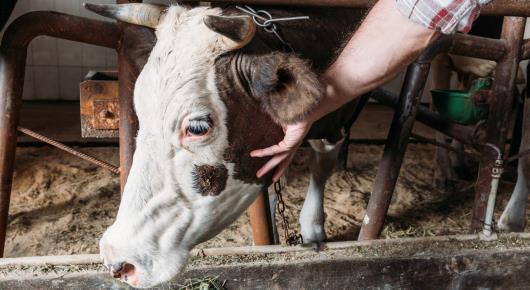Ukrainian beef industry looks to make gains

More than 100 farmers, processors, investors and industry experts have gathered here today for the First Ukrainian Beef Congress. The event – part of the Ukrainian Food Expo – is organized by FAO and the European Bank for Reconstruction and Development, together with the Ukrainian Food Export Board and the Association of Milk Producers.
The Congress is expected to reflect on three years of work under the Public-Private Meat Policy Dialogue Project and centre on a roadmap to success. Specifically it will look at a meat export manual, a business plan for cattle finishing in feedlots, and a business plan for beef slaughter and processing.
Discussions on greener and more sustainable beef are also foreseen. New technologies and greater efficiency can help not only the livestock industry but the entire agriculture sector to lower greenhouse gas emissions while ensuring food security.
According to Ukraine’s Deputy Minister for Agricultural Policy and Food, Olga Trofimtseva, beef production is considered by the Ministry as one of the most promising sectors in the country’s agriculture, despite rather modest production volumes.
Opening the event, Trofimtseva said, “I am sure that the focus of agricultural policies including state-supported programmes on animal husbandry, combined with world demand and our competitive advantages, will soon give tangible results in both the beef and dairy sectors.
“We do understand the importance of the beef sector, not only on its own but as a possible accelerator for other complementary sectors with value added,” she continued. “High-quality beef – made in Ukraine and sold all over the world in supermarkets or restaurants and recognized by its brand – is our goal.”
Bringing competitive advantages
According to Andriy Yarmak, FAO economist working on dairy and meat sector projects in Ukraine, prospects for Ukrainian beef producers are very promising. Ukrainian prices for feed grain and protein meals are among the lowest in the world, and the country is much closer to major beef markets in the Middle East and North Africa than their current suppliers. Until recently, the missing link for building an efficient value chain has been knowledge, but this is now developing.
The Ukrainian cattle sector is driven by the dairy industry. Each year around 1 million dairy bulls are slaughtered without being fattened to beef condition. Advanced grain-based feeding and processing technologies, combined with exports, could help farmers raise their revenue from US$ 1.5 to US$ 3.5 per kilogramme of live weight.
"Beef is the greatest niche of Ukraine’s agribusiness,” Yarmak said. “With annual revenues now under US$ 100 million, it could potentially be brought up to US$ 2 billion without increasing herds."
Revenues from beef in Ukraine could potentially rise
from less than US$ 100 million to US$ 2 billion – without increasing herds.
Andriy Yarmak
FAO economist
"Today we are providing our farmers with detailed technological and marketing roadmaps based on the best global practices fully adapted to Ukrainian conditions and proven by calculations,” he added.
Increased beef production in Ukraine could actually reduce pollution by cutting transportation requirements, Yarmak said. Feed grains and oil meals currently being exported in large volumes could be utilized to feed livestock in Ukraine. Greener livestock production is also suggested, and FAO and the EBRD are expected to focus on these aspects in coming months.
Inclusive value chains
Since few if any dairy farmers would have a sufficient number of bulls to be profitable, cooperation among them to create larger feedlots and slaughter facilities is suggested as the most efficient approach. FAO and the EBRD have supported the development of new draft legislation to enable transparent and efficient cooperation.
Since more than 50 percent of dairy cattle are held by non-commercial household producers, FAO and the EBRD have developed a strategy to include them in this profitable value chain. This includes granting households access to veterinary services, enabling artificial insemination of their cows using meat-breed semen from feedlot cooperatives, selling bulls back to the feedlots, thereby gaining significant additional revenues while maintaining animal health.
Knowledge opens doors
Over the past three years, FAO and the EBRD’s export promotion teams have been involved in market studies to help Ukraine diversify its exports. Based on the results, detailed export guidelines are now available for anyone interested in exporting meat and dairy products. Export promotion activities have included training in export promotion for industry associations, and assistance in organizing trade missions and facilitating negotiations with prospective buyers.
“Our goal is to help industry associations and leading players learn all the peculiarities of each critical step leading to successful and systematic exports,” said Vasyl Hovhera, economist and project coordinator with the EBRD. “We always emphasize that learning is a never-ending process.”
Ukraine and FAO
Ukraine joined FAO in 2003 and is partnering with various FAO projects both in the country and region. Since 2015, FAO has been operating in Ukraine on the emergency response programme in the country’s conflict-affected eastern region; and the nationwide agriculture development programme.
24 November 2017, Kyiv, Ukraine
